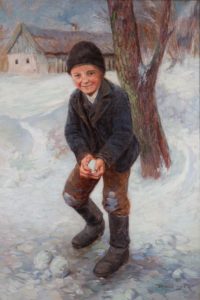 We followed a wintry storm last week across Texas and Louisiana and up into North Carolina. When we pulled up to our forested Bed & Breakfast near the coast, it looked like a scene from White Christmas. The effect was dazzling.
We followed a wintry storm last week across Texas and Louisiana and up into North Carolina. When we pulled up to our forested Bed & Breakfast near the coast, it looked like a scene from White Christmas. The effect was dazzling.
Two images stand out from our week-long trip: snow cream and mud. If a person is from Texas, it’s entirely possible not to have seen much snow. Our little granddaughter hadn’t. But she knew about snow cream from stories.
All it took was a styrofoam cup, a scoop of snow carefully honed out of a drift still intact behind a friend’s office, a measure of coffee cream, and a packet of sugar. Voila! Snow cream . . . or a reasonable facsimile thereof. It tasted pretty good. Wild to share it, Patti proclaimed its glory across the whole office, but she found no takers (other than me).
Snow Cream is a rite of passage. We forget how important such “small rites” are for a child, particularly when the activity is something ephemeral. Snow cream, snow angels, a snowman—each of these will melt; but, for a brief time, they are there, icy and real in our hands.
On this same trip we visited a house where a well-meaning person had thrown down shovels of dirt to make the sidewalks less slippery. The ice had melted, so the dirt transformed into a hard-to-see layer of caulk on the pavement. The minute we stepped out of the car, we were sole-deep in clay. Too late, I recalled from my graduate-school days that Carolina mud is different from our Texas mud. Each step we took to extricate ourselves added to the dilemma. Within moments, everyone in our party was taller from layers of mud accumulating under our shoes.
If you’re going to get stuck in the mud, do so grandly, I sang out. Not everyone was equally amused (although the granddaughter laughed hilariously). Still, think how many stories feature someone, or something, stuck in the mud. For our granddaughter, a literary image was now a squishy, yucky reality requiring at least twenty minutes of shoe-scraping and subsequent baths for our shoes.
As adults we carry tens of thousands of these experiences inside us. Yet, at one point each was new for us. Dr. David Milnes, the dynamic conductor at my university who now directs the orchestra at UC-Berkeley, voiced it in a way that has never left me. One morning, after he had directed our orchestra in a fabulous performance of Beethoven’s Fifth Symphony, a colleague asked him, “It was great, David, but how do you keep that energy level going? After all, you’ve conducted that work hundreds of times.” “Yes,” said Milnes. “But for these kids, last night was a World Premiere.”
A world premiere. The first time something important happens for a child really is a world premiere. It doesn’t have to be an artistic work. Maybe it’s something like a child first riding a bike down the driveway. Or the moment the mystery of turning a door knob reveals itself to a tiny hand. Or the first taste of snow cream.
Such little premieres are also cultural anchors. They bind us together just as much as any serious academic study or complex undertaking, particularly if we can stop long enough to value them.
A moment of firsts awaits us every day, big and small, mildly interesting and exhilarating. The moment we spot the tentative heads of winter pansies planted around the church. The first time a child replies effortlessly to a multiplication question or connects “Norway” with that spot pointed out on the globe. Or the first “I-made-it-myself” cheese sandwich.
If we don’t think we have time to notice these “firsts,” perhaps we’ve forgotten their power to energize and focus us. To exhilarate, console, or reassure us.
Today is new day of world premieres. It’s almost unnerving to go out the door, so many await us. Grab them while they are there, because they melt into mundanity if we’re not insistent that they stay vivid and crisp in our hands.



